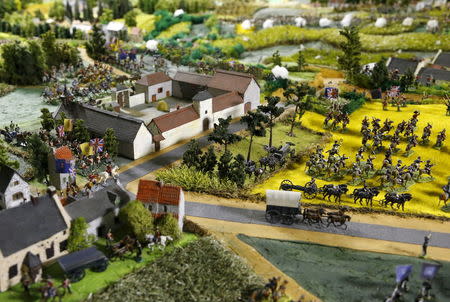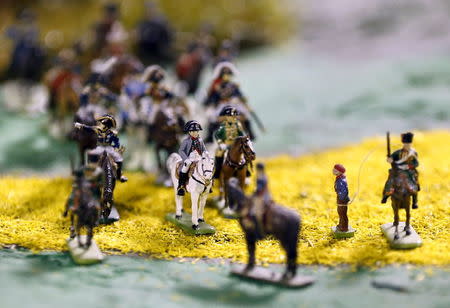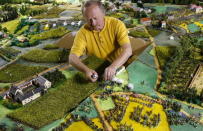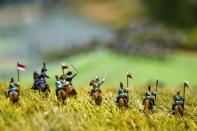Near-run thing: Waterloo model ready in time - after 40 years
By Miranda Alexander-Webber SCHAFFEN, Belgium (Reuters) - "The nearest run thing": like the battle itself in Wellington's pithy verdict, Willy Smout's epic model of the field of Waterloo combines a lifetime of effort with a race against time to pull through at the last. Forty years in the making, the Belgian engineer realised a couple of years ago that his diorama of the historic battlefield outside Brussels might still be incomplete by the time of the last great commemoration he would see -- next month's 200th anniversary of the day that changed Europe's history forever. Sprawling over 40 sq.m. in his basement in the village of Schaffen, 70 km (40 miles) northeast of Waterloo, the 1/1,000-scale model and its 3,000 handpainted soldiers had occupied Smout since 1975, when he was 16. In the spirit of Britain's Duke of Wellington, who famously called his final victory over Napoleon Bonaparte's French army on June 18, 1815 a "damned nice thing" settled only by the 11th-hour arrival of Prussian allies, Smout left it late to finish. "During the last couple of years, I pushed myself really hard to finish it," he told Reuters. "I succeeded last week." He reckons he has spent 40,000 hours -- 1,600 days or four and half sleepless years -- making the model and in research spanning six countries. The father of four visited libraries and museums and made hundreds of visits to the site itself. With each tiny soldier representing 72 of his historic counterparts, Smout even built his house to fit the immense diorama in the cellar. Now he has started to welcome curious neighbours on Saturdays to share his extraordinary creation. He has spent about 150,000 euros ($170,000) on it, but Smout says the personal value of his life’s work is beyond measure. He will be among 200,000 visitors expected at bicentenary events in mid-June. Belgium, whose own creation as a state in 1830 owed much to the European order created after Waterloo, will commemorate the battle with festivities and re-enactments. (Editing by Alastair Macdonald and Andrew Heavens)

 Yahoo News
Yahoo News 









